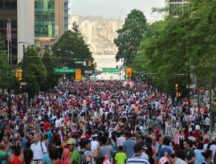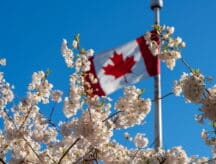Ontario wants to double nominations for permanent residence by 2022
Ontario is looking to double the number of immigration candidates it can nominate for Canadian permanent residence through Canada's Provincial Nominee Program.
The province would like to increase its allocation under the Provincial Nominee Program, or PNP, from 6,650 this year to 13,300 in 2022.
Ontario's Immigration Minister, Vic Fedeli, formally requested the increase in a letter sent recently to his new federal counterpart, Marco Mendicino.
The federally managed PNP allows participating provinces and territories to nominate a set number of Economic-Class immigration candidates each year for Canadian permanent residence.
Each province's allocation under the PNP is set in accordance with the program's annual admissions targets, which are established by Immigration, Refugees and Citizenship Canada (IRCC).
The PNP's admissions target for this year is 61,000 new permanent residents, which is an increase of 6,000 over the 2018 target of 55,000.
The admissions target for the PNP in 2020 is 67,800.
Recent years have seen Ontario's component of the PNP, the Ontario Immigrant Nominee Program (OINP), receive the largest allocation among participating provinces and territories.
In 2019, that was 6,650 nominations, which was an increase of only 50 over the year before. An additional 700 nominations granted last week brought its 2019 allocation to 7,350.
Find out if you are eligible for Canadian immigration
Allocation falling short of labour needs
In an email statement to CIC News, the OINP said its allocation over the past several years has fallen short of actual labour needs in the province.
"Employers continue to express significant frustration that the limited number of nominations has hindered their efforts to hire foreign talent, which ultimately impacts the growth and sustainability of their businesses," the statement reads.
The OINP said the letter sent to Mendicino proposes the "collaborative development of a multi-year planning process" with the goal of doubling the OINP's allocation to 13,300 by 2022.
"We are awaiting a response from the federal government," the statement reads.
The OINP said it is also exploring ways "to exercise greater autonomy and control over the selection of immigrants to the province."
The OINP did not comment on how the additional OINP nominations would be distributed among its nine existing immigration streams or what percentage would be dedicated to the three pathways aligned with the federal Express Entry system.
One of these streams, the Human Capital Priorities Stream, has been used this year to address targeted labour needs in Ontario's IT sector.
The OINP also did not say how an increased allocation would benefit the proposed Ontario Regional Immigration Pilot, which could launch in early 2020 and will focus on attracting immigrants to smaller communities in the province.
Feds say new pilots will help fill gaps
A statement from Mendicino's press secretary, Mathieu Genest, said collaboration is central to IRCC's approach to immigration levels planning, which provides for an additional 27,000 admissions through the PNP over the coming years.
"We understand that provinces and territories play an important role in attracting and retaining newcomers to help grow our economy," Genest said.
"We have consulted with provinces and territories to ensure that the levels plan meets their requirements to fill labour shortages and attract needed talent."
Genest also pointed to the proposed Municipal Nominee Program for smaller municipalities and a new federal immigration pilot that will bring in additional immigrants to rural and remote communities in Ontario and Canada's western provinces and territories.
The Rural and Northern Immigration Pilot counts five Ontario communities among the 11 taking part in the program, which has an annual cap of 2,750 applicants plus their dependents.
Provincial push for more immigration control
Ontario's push for new immigration powers follows recent overtures from the Government of Saskatchewan for greater control over immigration to that province.
Saskatchewan has set a population target of 1.4 million residents by 2030 and is planning for economic growth that could add 100,000 jobs over that time period.
Increased immigration is considered vital to these plans and the province's Immigration Minister, Jeremy Harrison, has written Mendicino to request formal negotiations.
Currently, Quebec is the only Canadian province that has successfully negotiated a greater degree of control over immigration with the federal government.
The 1991 Canada-Quebec Accord grants Quebec full control over the selection of Economic-Class immigrants, among other powers.
Find out if you are eligible for the Express Entry pool
© 2019 CICNews All Rights Reserved
- Do you need Canadian immigration assistance? Contact the Contact Cohen Immigration Law firm by completing our form
- Send us your feedback or your non-legal assistance questions by emailing us at media@canadavisa.com





